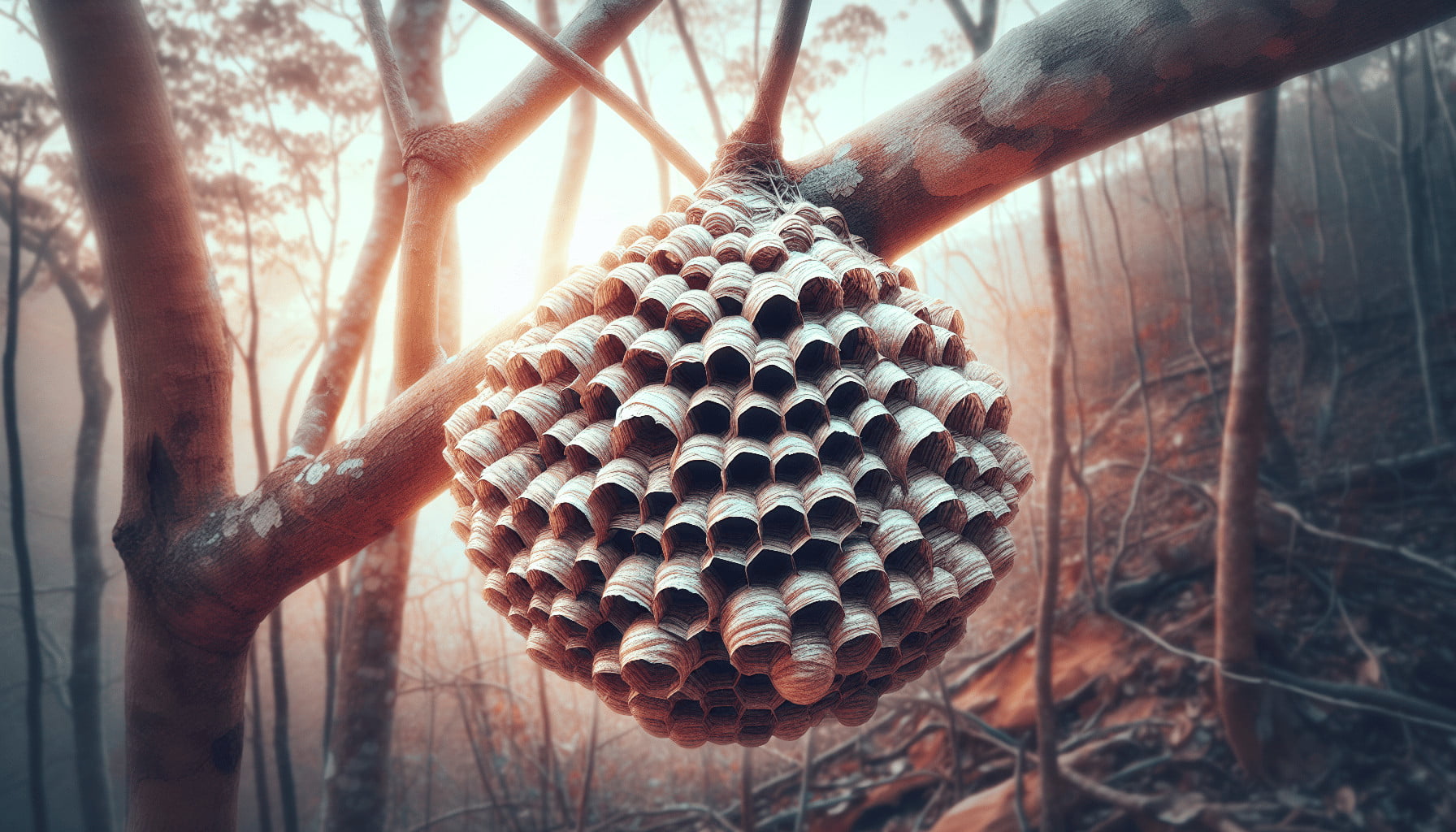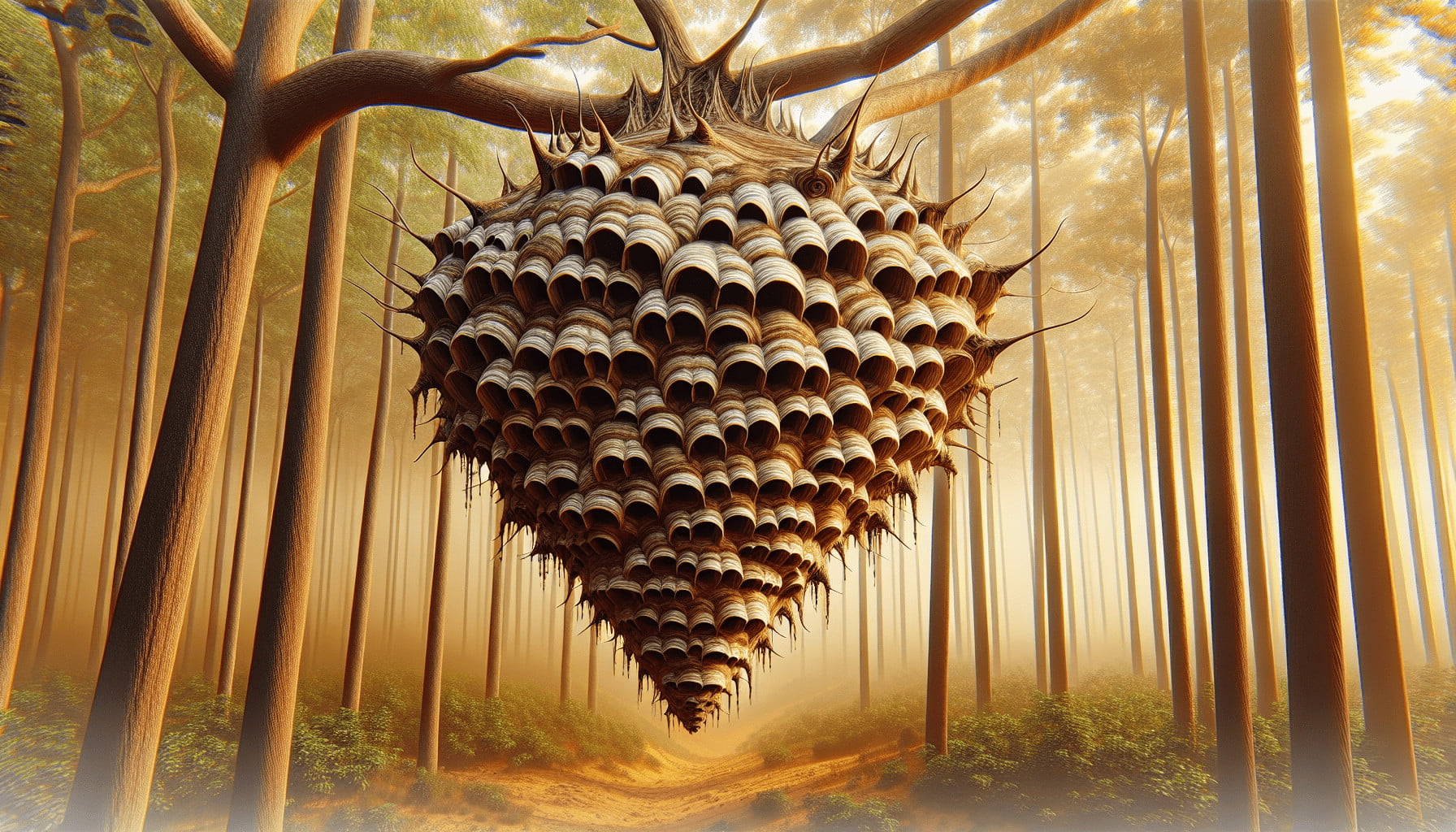Have you ever been hiking or camping and stumbled upon a strange nest or hive? Knowing how to recognize dangerous insect nests in the wild can not only save you from a painful sting but could also prevent a potentially life-threatening situation. This guide provides essential information to help you identify and avoid these natural hazards.

Why It’s Important to Recognize Insect Nests
Understanding the types of insect nests and their potential dangers is a critical skill for anyone who spends time outdoors. Some insects can cause severe allergic reactions, while others are simply very aggressive when disturbed. By recognizing the nests of dangerous insects, you’ll be better prepared to navigate the wilderness safely.
Common Dangerous Insects and Their Nests
When you think of dangerous insects, bees and wasps may come to mind first, but there are several other types of insects whose nests you should be cautious about. Let’s go through some of the most common ones you’ll encounter in the wild.
Wasps
Wasps can be very aggressive and their stings are painful. They can sting multiple times, unlike bees which die after one sting. Here are some particular species to watch out for:
- Yellowjackets
- Hornets
- Paper Wasps
Yellowjackets
Yellowjackets typically build nests in the ground or in voids like wall cavities and hollow trees. These nests can house thousands of wasp workers.
| Identification Feature | Description |
|---|---|
| Color | Black and yellow stripes |
| Nest Location | Often built underground or in wall cavities |
| Aggressiveness | Highly aggressive, especially in late summer and fall |
Hornets
Hornets build large, football-shaped paper nests usually high in trees, but sometimes in bushes or attics.
| Identification Feature | Description |
|---|---|
| Color | Black and white or yellow and black |
| Nest Shape | Rounded, football-shaped |
| Nest Location | Often high in trees or shrubs, sometimes attics |
Paper Wasps
Paper wasps create smaller, umbrella-shaped nests that hang from eaves, branches, or attics. Their nests are open and consist of exposed cells.
| Identification Feature | Description |
|---|---|
| Color | Brown, sometimes with yellow markings |
| Nest Shape | Upside-down umbrella with exposed cells |
| Nest Location | Eaves of buildings, branches, attics |
Bees
Bees are generally less aggressive than wasps but can still pose a danger if their nest is disturbed. Honeybees and Africanized bees are two types to recognize.
Honeybees
Honeybees usually build nests in hollow trees, and sometimes in the walls of buildings or rock crevices.
| Identification Feature | Description |
|---|---|
| Color | Golden-yellow with black stripes |
| Nest Shape | Irregular mass with hexagonal cells |
| Nest Location | Hollow trees, building walls, rock crevices |
Africanized Bees
Africanized bees look similar to honeybees but are far more aggressive. They can chase a person for over a quarter of a mile. Their nests are often found in similar locations to honeybees.
| Identification Feature | Description |
|---|---|
| Color | Golden-yellow with black stripes, slightly smaller than regular honeybees |
| Aggressiveness | Extremely aggressive, highly territorial |
Ants
Certain species of ants can be dangerous, especially fire ants, which can deliver painful stings.
Fire Ants
Fire ants build mounds that can be up to 18 inches high, often in open fields and along roadsides.
| Identification Feature | Description |
|---|---|
| Color | Reddish-brown |
| Nest Shape | Dome-shaped mounds |
| Nest Location | Open fields, yards, open grounds |
Carpenter Ants
Carpenter ants don’t sting, but their nests can cause significant structural damage to wooden buildings as they hollow out wood to create their nests.
| Identification Feature | Description |
|---|---|
| Color | Black or red and black |
| Nest Location | Inside wood, usually water-damaged wood |
Hornets
Asian Giant Hornets, also known as “Murder Hornets,” are another type of dangerous insect with nests you should know about. Their sting is extremely painful, and they can decimate bee populations.
| Identification Feature | Description |
|---|---|
| Color | Orange and black striped head |
| Nest Shape | Often underground but can be found in tree roots |
| Aggressiveness | Highly aggressive, especially near the nest |
Recognizing Nest Features
Understanding the features of these nests can significantly help you steer clear of danger. Here are some common nest features to look out for:
Nest Material
Insects use different materials to construct their nests. For example:
- Papery Nests: Hornets and paper wasps use chewed wood fibers mixed with saliva.
- Earthen Nests: Some wasps and bees build nests in the ground.
- Waxy Nests: Bees use beeswax to construct their hives.
Nest Location
The location of a nest can also indicate what type of insect it belongs to.
- High in Trees: Likely to be hornets or some types of bees.
- Underground: Could be yellowjackets or certain types of bees and wasps.
- On Structures: Wasps often build their nests under eaves and in attics.
Nest Shape and Size
Knowing the shape and size of a nest can also be very telling.
- Umbrella-shaped: Paper wasps.
- Football-shaped: Hornets.
- Small mounds: Fire ants.
- Large, irregular mass: Honeybees.
Presence of Insects
Seeing the insects darting in and out of the nest can provide a clue. For example, wasps may be seen flying rapidly, while bees often move more methodically.
Precautionary Steps When You Encounter A Nest
Found a nest? Here’s what you should do:
- Keep Your Distance: Don’t approach or try to inspect the nest closely.
- Move Slowly: Quick movements can provoke the insects.
- Back Away: Calmly and slowly back away without turning your back to the nest.
- Avoid Loud Noises: Vibrations can agitate the insects.

First Aid for Stings
Knowing how to treat stings can be critical. Here’s a quick guide on what to do:
Wasps and Bees
- Remove the Stinger: Use a straight edge to scrape it out.
- Clean the Area: Wash with soap and water.
- Apply Cold Pack: Helps reduce swelling.
- Take Pain Relievers: Over-the-counter pain relief and antihistamines can help.
- Seek Medical Attention: If you have symptoms of an allergic reaction.
Fire Ants
- Clean the Area: Wash with soap and water.
- Apply Cold Pack: Helps with swelling.
- Use Hydrocortisone Cream: For itchiness and discomfort.
- Seek Medical Attention: If severe reactions occur.
Preventing Encounters
Avoiding encounters with these insects is the best way to stay safe. Here are some tips for prevention:
- Wear Protective Clothing: Long sleeves, pants, and closed-toe shoes can help prevent stings.
- Watch Your Step: Especially in grassy areas where ground nests might be hidden.
- Keep Food Covered: Sugary foods and drinks attract wasps and bees.
- Use Insect Repellent: Though not always effective against bees and wasps, it can help deter other pests.
- Be Alert: Keep your eyes open for nests in trees, on the ground, and under eaves.
Conclusion
Recognizing dangerous insect nests in the wild is a crucial skill for anyone spending time outdoors. By knowing what to look for, where to look, and how to react, you can navigate your adventures more safely. Remember to stay aware of your surroundings, and if you do encounter a nest, remain calm and follow the precautionary steps to avoid stings. Happy trekking!
By understanding these key points, you’ll be better equipped to handle and prevent encounters with dangerous insect nests in the wild. Enjoy your time outside with a better sense of security and awareness!
